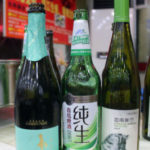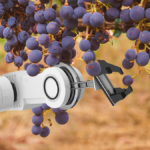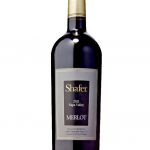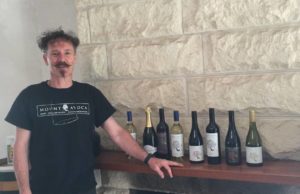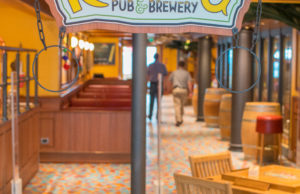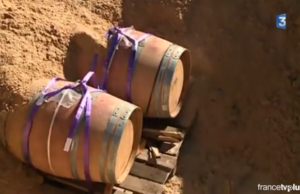Pulsating new idea
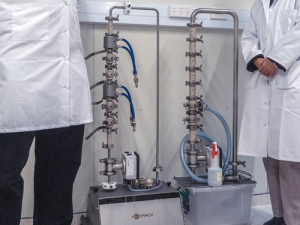
You will often hear winemakers waxing lyrical about the merits of being hands-off, letting the winemaking happen in the vineyard and having minimum intervention.
But what if you could enhance flavour profiles, yield, and the time it takes to make wine with no impediment to quality? Wouldn’t that be worth considering, even if it did involve a little electric shock treatment?
New Zealand Winegrowers and MBIE obviously think so, as they are funding a collaboration with Otago and Lincoln Universities to find out whether subjecting grapes to a short electric pulse might produce better wine with less additives.
Professor Indrawati Oey (Food Science) and Associate Professor David Burritt (Botany) explain that the new PEF (Pulsed Electric Field) machine is hardly revolutionary.
“Actually this technique has been used overseas,” Oey explains, “but we would be the first in New Zealand. It is a technique that has been trialed in a number of different countries by different groups, but commercially, not quite yet.
Though it probably will be in the future, which is why it is important for wine producers in New Zealand to understand the process. It could be used as a marketing strategy too for instance, as it is a clean, green efficient way of producing better quality wines.”
Though it probably will be in the future, which is why it is important for wine producers in New Zealand to understand the process. It could be used as a marketing strategy too for instance, as it is a clean, green efficient way of producing better quality wines.”
The idea is, that by subjecting grapes to short electric pulses, the process of extracting polyphenols, including anthocyanins and tannins, might be more efficient than traditional winemaking methods.
“The quality of red wine is often determined by the flavour enhancing metabolites that are released from the berry into the juice,” says Burritt.
“A lot of those are quite difficult to extract because they are tied up in the cells that make up the skins. Traditional methodology has relied on mechanical disruption and steeping, but if you steep grapes for too long or under the wrong conditions, instead of getting the metabolites that enhance the quality, you also get those that add a negative effect. That is where techniques like PEF can come in, because it can allow us to release the metabolites that we want quickly.”
While Oey has been testing this process on grapes since 2012, it was only once she starting working with Burritt that they honed their focus.
Concentrating their research on Pinot Noir and Merlot, mainly due to their very different characteristics, some of their grapes come from an on-going collaboration with Lincoln University. Grown in an experimental vineyard using different management techniques, the methodology is to exert as much control as they can over the vineyard conditions so they can harvest the grapes, analyse them at the point of harvest and then analyse them over a period of time during the maceration and extraction period. They also get a small quantity of grapes from the wine community.
“One of the things that we do a little differently to what they do overseas,” says Burritt, “is that we are very careful about the providence of the material that we are working with. This then links into what sort of effects the environment management strategies have on the quality of the grapes before they are even subjected to the PEF treatment.”
Obviously, this investment in technology and research time is based on the prospect of potential benefit for the local wine community. Though, when Oey starts talking about using PEF to modify the sensory profile of wine, you can almost hear loud gasps of condescension from traditionalists.
Realising this, Oey and Burritt are equally quick to stress that their process is simply speeding up and improving a naturally occurring process, which winemakers tinker with anyway.
“If you think of very thick walled plant cells, when they get macerated under normal circumstances, mechanical energy is used to crush the cells and break them open. The amount of mechanical energy determines the amount you get out, how many molecules are released from the fibres in the cell walls. We’re just applying that energy in a different, more efficient way,” says Burritt.
“The separation of the juice and skins is very clean and very efficient,” Oey adds. “If the harvest is really bad, the compounds are still there, but not necessarily extractable. With this technique, it is just a current with no chemicals, so it is very clean. The treatment only takes micro-seconds, but you can shorten the maceration time from say 14 days to two days.”
“Sure there will be a start-up cost, but I should imagine that the energy savings will probably pay for the instrument over a couple of years” says Burritt. “Also, if they have a poor year with low yield, which can have a significant impact on their revenue stream, then PEF can improve on that. Having an extra 10-20% juice might redress the balance. I don’t think that New Zealand wants to be in the game of producing mass quantities of cheap wine, but if you can slightly manipulate the flavours and aromas in certain ways then you can add a lot of value.”
Both Oey and Burrit are keen to mention that collaborating with wineries is integral to the success of their research. Having people on hand who can taste and assess the balance of tannins and acid is invaluable, especially as PEF gives them the tools to quickly alter the balance via a simple tweaking of electrical intensity.
“The main thing is, people shouldn’t think about it as an extreme treatment,” says Oey. “It isn’t. Just think about it as a device sitting close to the destemmer, part of the line before the grapes go to the maceration tanks. All industries should be aware of new innovations that at first glance might appear a bit scary, but in the long term could be incredibly beneficial.”
“From the winemakers that I know, there seems to be a very interesting balance between science and art, and in many ways I feel the balance even moves a little more towards art,” says Burritt.
“But, when you start to introduce techniques like this, then there are some sophisticated analytical tools producing solid data that can help inform what those artful decisions might be. Things like metabolic profiling. I mean you can look at not just one or two molecules associated with flavour or aroma, but hundreds or even potentially thousands. It’s going to be very interesting over the next five to 10 years.”
Click here to view original web page at www.ruralnewsgroup.co.nz


